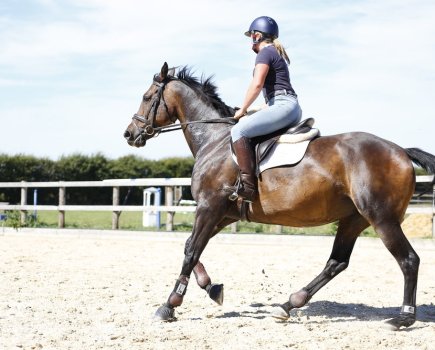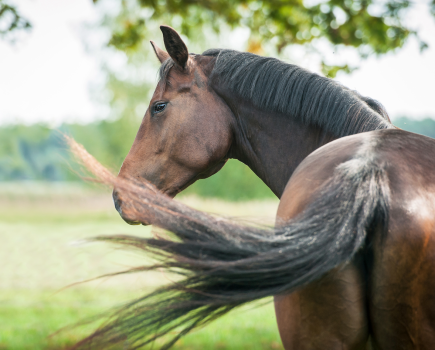There are three main types of winter worms that horse owners need to consider at this time of year: encysted small redworm, tapeworm, and bots.
Here, vet Sue Taylor MRCVS discusses the three main types of worm that require treatment in the winter.
Encysted small redworm (Cyathostomes)
This is one of the most common and damaging parasites found in horses. The larvae hibernate in the gut wall during the winter and emerge en masse as adults in the early spring, causing severe damage to the horse’s intestines.
Encysted small redworm pose a potentially fatal health risk. If left untreated, encysted small redworm may develop into adults. They can cause weight loss, diarrhoea and colic with a mortality rate of up to 50%.
It is important horse owners realise that the presence of encysted small redworm will not show up in a faecal worm egg count because the larvae do not lay eggs.
It is for this reason that all horses should be treated for encysted small redworm during late autumn and winter.
Tapeworm (Cestodes)
Tapeworm are grey, flat, segmented worms that can grow up to 8cm long and 1.5cm wide. They form clusters at the junction between the small and large intestines where the mature worm releases segments full of eggs.
These are then passed in the horse’s droppings onto the pasture. Here, they are eaten by the forage mite, the eggs hatch and the larvae develop inside the mite.
The horse then eats the mite while grazing and the larvae develops into a mature adult over the next six to ten weeks. Once inside the horse, tapeworm can cause digestive issues, loss of condition, spasmodic colic and fatal blockages.
Tapeworm won’t show up in a faecal worm egg count, but there is a blood test available and a saliva test that owners can do themselves.
This should be done once in the spring and once in the autumn to detect whether your horse has a tapeworm burden and requires treatment.
Tapeworm burdens are likely to be highest in autumn, at the end of the grazing season, so testing — and worming only if necessary — should take place then.
Bots (Gastrophilus)
Bot flies lay sticky yellow eggs on the horse’s coat, particularly the legs, shoulders and face in the summer, which are then ingested when the horse grooms themselves.
The larvae then hatch and penetrate the mucosa of the tongue and mouth and then migrate towards the pharynx and then the stomach. Here, they attach to the stomach lining.
After nine months, the large red or yellow larvae are passed in the droppings the following spring and summer. After six weeks, the adult fly emerges.
If left untreated, bots can cause inflammation in the mouth and throat, and ulceration and damage in the stomach.
Every effort should be made to remove bot fly eggs from the horse in the summer before the horse ingests them. There’s a specific tool that makes this possible as they are tricky to remove by hand alone.
There is no test for bots because they pass as larvae in the droppings and not as eggs. Administer a wormer after the first frost when the adult flies have died and before the bots mature.
Main image © Shutterstock
Related content
- New test available for potentially fatal redworm (and you don’t need to buy it from a vet)
- Resistance to horse wormers: action every owner must take now or ‘horses will die’
- Faecal worm egg counts for horses explained
- Using the wrong wormer could be fatal, warns vet
- Essential horse worming schedule from a vet








